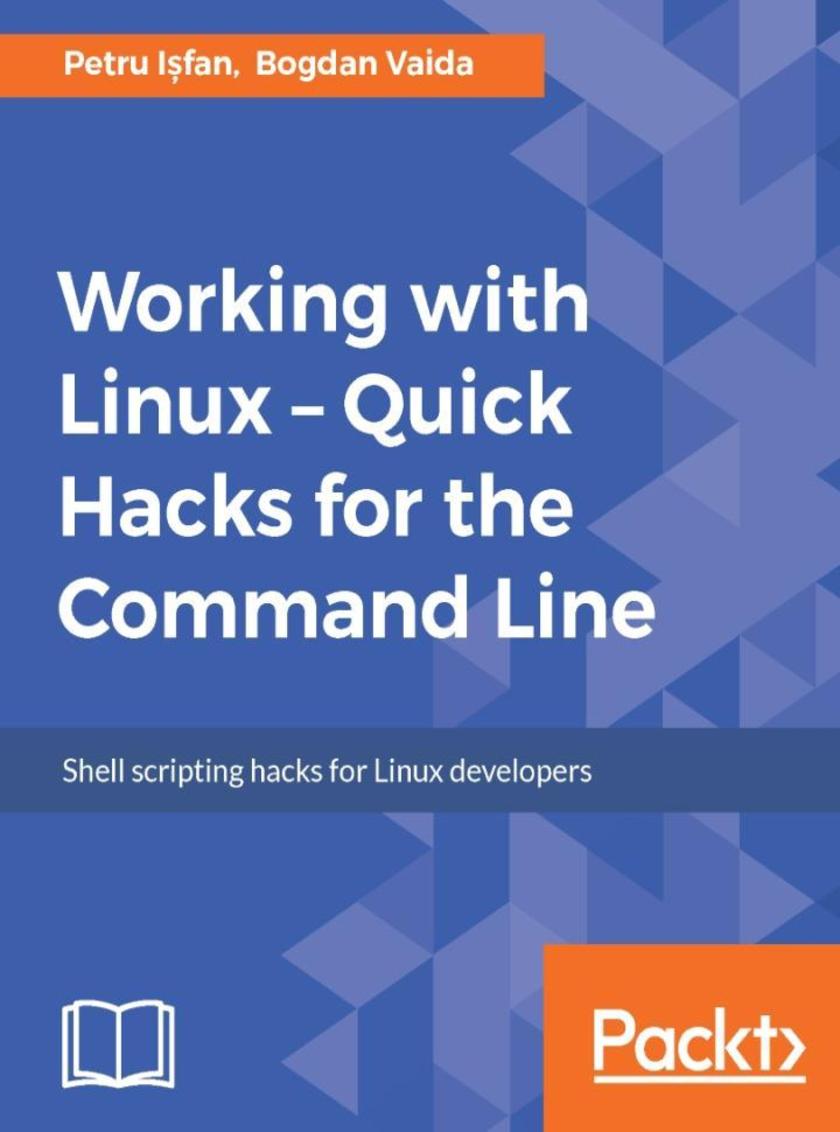
Working with Linux – Quick Hacks for the Command Line
¥71.93
Say goodbye to unproductive Linux habits and switch to the express lane About This Book ? Improve your terminal and command-line productivity by using powerful tools ? Sharpen your existing command-line skills and achieve complex tasks faster ? Save time and money by creating customized commands that automate day-to-day tasks Who This Book Is For This book is for system administrators and developers who know the basics of Linux and want to brush up and sharpen their skills. Prior experience with Linux shell is required. What You Will Learn ? Optimize the power of Guake by integrating it with ClipIt ? Deep dive into the workings of the console editor—Vim ? Explore the advanced concepts and best practices of shell *ing ? Edit large amounts of data quickly using Sed ? Use pipes and subshells to create customized commands ? Get to know how you can speed up the software development and make the terminal a handy companion In Detail Websites, online services, databases, and pretty much every other computer that offers public services runs on Linux. From small servers to clusters, Linux is anywhere and everywhere. With such a broad usage, the demand for Linux specialists is ever growing. For the engineers out there, this means being able to develop, interconnect, and maintain Linux environments. This book will help you increase your terminal productivity by using Terminator, Guake and other tools. It will start by installing Ubuntu and will explore tools and techniques that will help you to achieve more work with less effort. Next, it will then focus on Terminator, the ultimate terminal, and vim, one of the most intelligent console editors. Futhermore, the readers will see how they can increase their command line productivity by using sed, find, tmux, network, autoenv. The readers will also see how they can edit files without leaving the terminal and use the screen space efficiently and copy-paste like a pro. Towards the end, we focus on network settings, Git hacks, and creating portable environments for development and production using Docker. Through this book, you will improve your terminal productivity by seeing how to use different tools. Style and Approach This book takes a step-by-step approach using examples that show you how to automate tasks using terminal commands. You’ll work through easy-to-follow instructions so you learn to use the various Linux commands and tools such as Terminator, Guake, and others.
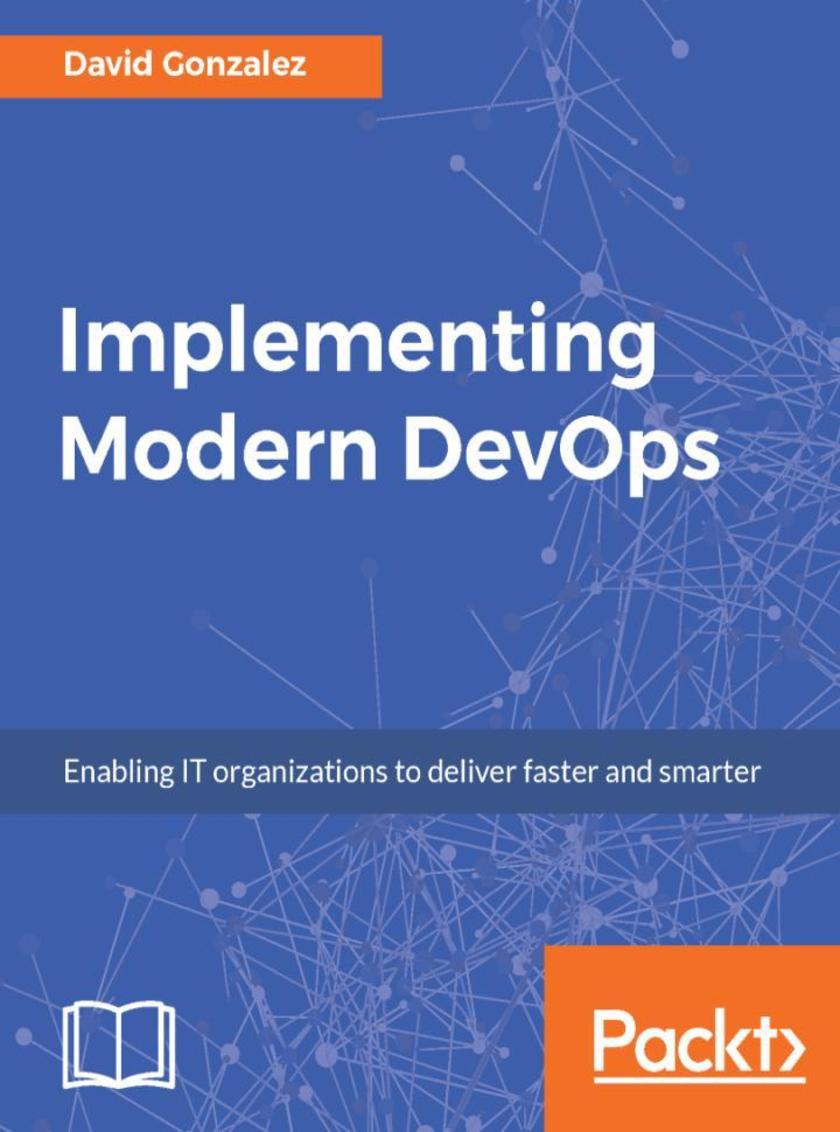
Implementing Modern DevOps
¥71.93
Help your organization join the DevOps revolution About This Book ? Helps you skill up your DevOps knowledge without a strong set of prerequisites ? Deliver continuously improved software by showcasing the most advanced tools and techniques ? Acquire a deeper insight into implementing DevOps in your organization and deliver results from day 1 Who This Book Is For This book is written for engineers and companies that want to learn the minimum set of required technologies and processes to be successful in the DevOps world. This book also targets system administrators, developers, and IT professionals who would like to employ DevOps techniques and best practices to manage IT infrastructures or would like to acquire the necessary skills needed to work in DevOps teams. What You Will Learn ? Master development best practices. ? Understand how the Agile Delivery Methodology helps you ensure accuracy and quality. ? Analyze branching strategies such as branch creation, merging, and synchronization. ? Learn to automate builds to deploy and deliver code faster and more often ? Explore testing frameworks and how to automate testing ? Learn to put specific metrics in place to measure ROI of DevOps and monitor logs and events in a system In Detail This book follows a unique approach to modern DevOps using cutting-edge tools and technologies such as Ansible, Kubernetes, and Google Cloud Platform. This book starts by explaining the organizational alignment that has to happen in every company that wants to implement DevOps in order to be effective, and the use of cloud datacenters in combination with the most advanced DevOps tools to get the best out of a small team of skilled engineers. It also delves into how to use Kubernetes to run your applications in Google Cloud Platform, minimizing the friction and hassle of maintaining a cluster but ensuring its high availability. By the end of this book, you will be able to realign teams in your company and create a Continuous Delivery pipeline with Kubernetes and Docker. With strong monitoring in place, you will also be able to react to adverse events in your system, minimizing downtime and improving the overall up-time and stability of your system. Style and approach This book takes a step-by-step practical approach to the implementation of DevOps. This book will teach you how to enable IT organizations to deliver faster and smarter through a unique approach using Code-Build-Test-Release-Configure-Monitor (CBTRCM).
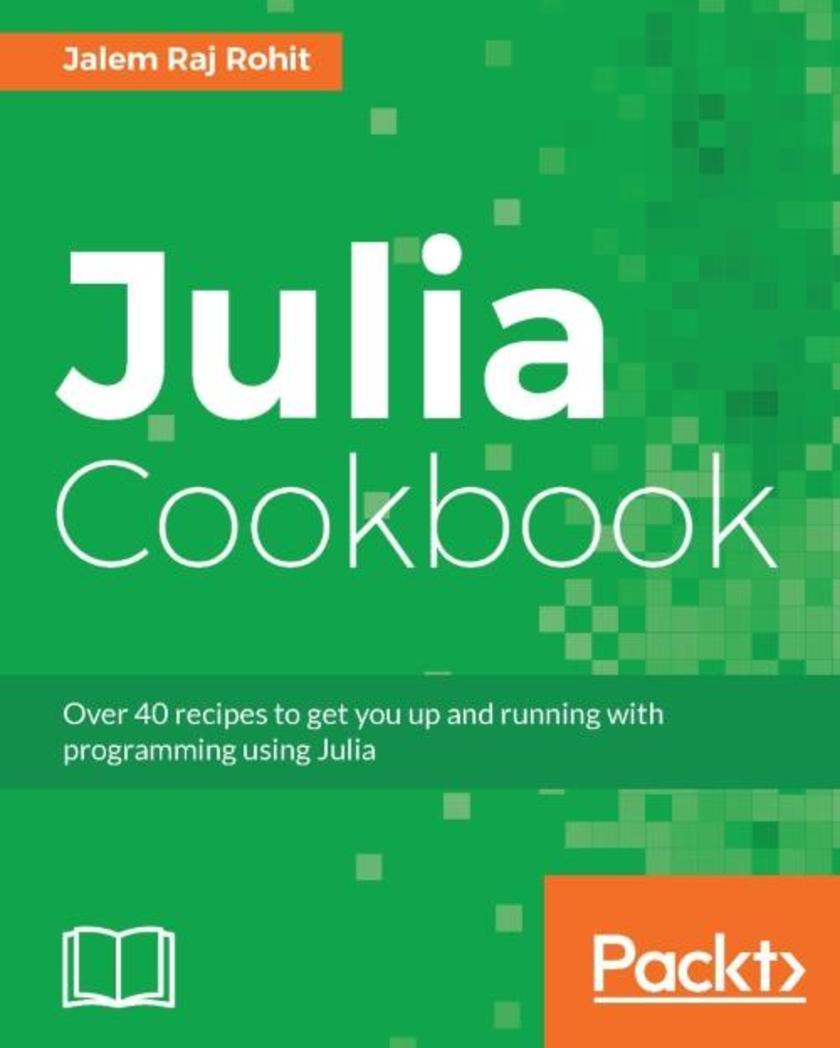
Julia Cookbook
¥71.93
Over 40 recipes to get you up and running with programming using Julia About This Book Follow a practical approach to learn Julia programming the easy way Get an extensive coverage of Julia’s packages for statistical analysis This recipe-based approach will help you get familiar with the key concepts in Juli Who This Book Is For This book is for data scientists and data analysts who are familiar with the basics of the Julia language. Prior experience of working with high-level languages such as MATLAB, Python, R, or Ruby is expected. What You Will Learn Extract and handle your data with Julia Uncover the concepts of metaprogramming in Julia Conduct statistical analysis with StatsBase.jl and Distributions.jl Build your data science models Find out how to visualize your data with Gadfly Explore big data concepts in Julia In Detail Want to handle everything that Julia can throw at you and get the most of it every dayThis practical guide to programming with Julia for performing numerical computation will make you more productive and able work with data more efficiently. The book starts with the main features of Julia to help you quickly refresh your knowledge of functions, modules, and arrays. We’ll also show you how to utilize the Julia language to identify, retrieve, and transform data sets so you can perform data analysis and data manipulation. Later on, you’ll see how to optimize data science programs with parallel computing and memory allocation. You’ll get familiar with the concepts of package development and networking to solve numerical problems using the Julia platform. This book includes recipes on identifying and classifying data science problems, data modelling, data analysis, data manipulation, meta-programming, multidimensional arrays, and parallel computing. By the end of the book, you will acquire the skills to work more effectively with your data. Style and approach This book has a recipe-based approach to help you grasp the concepts of Julia programming.
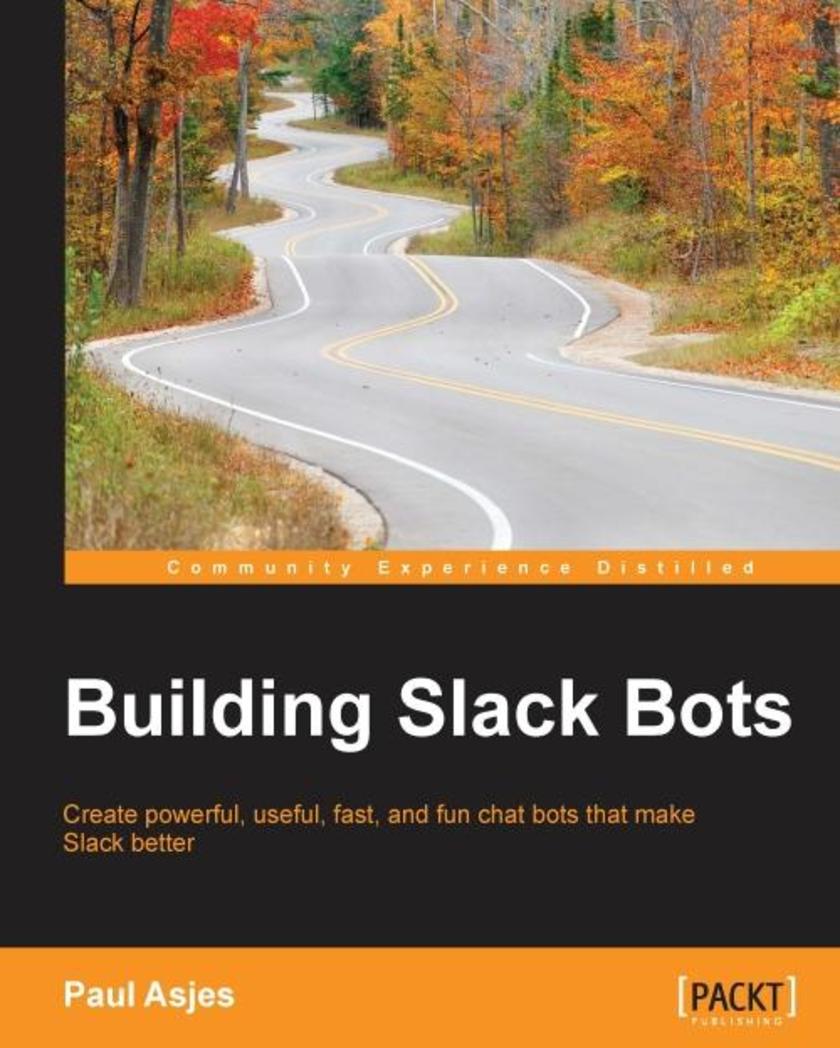
Building Slack Bots
¥71.93
Create powerful, useful, fast, and fun chat bots that make Slack better About This Book This is the first developer's guide to programming for Slack It covers everything you need to create chat bots for Slack’s conversational UI It’s full of realistic examples, usable code, and lucid explanations on everything you need to know Who This Book Is For This is a book for software developers who want to build Slack bots for their own company’s use or for customers. You need to know JavaScript. What You Will Learn Receive and send messages sent in Slack Respond to user commands Process natural language Perform useful tasks on commands such as fetching data from external sources Use webhooks and slash commands Create a Google Classroom and add customized information for each individual class In Detail Slack promises that its users will "be less busy." Slack bots interact with users in Slack chatrooms, providing useful immediate information, and automating work. This book gives you everything you need to build powerful and useful Slack bots. You’ll see how to hook into the Slack API to create software that can read and post to chatrooms, respond to commands and hints given in natural conversational language, and build fun and useful bots for your own place of work, both as a front end to your own service and to distribute and share as apps. You can even sell your bots and build a business as a Slack bot developer. Throughout the book, you’ll build useful and fun example applications that you can modify for your own situations. These range from simple, fun applications to liven up discussions to useful, data-driven apps to help you make decisions quickly and manage work. Style and approach This is a friendly step-by-step guide to building powerful, friendly Slack bots.
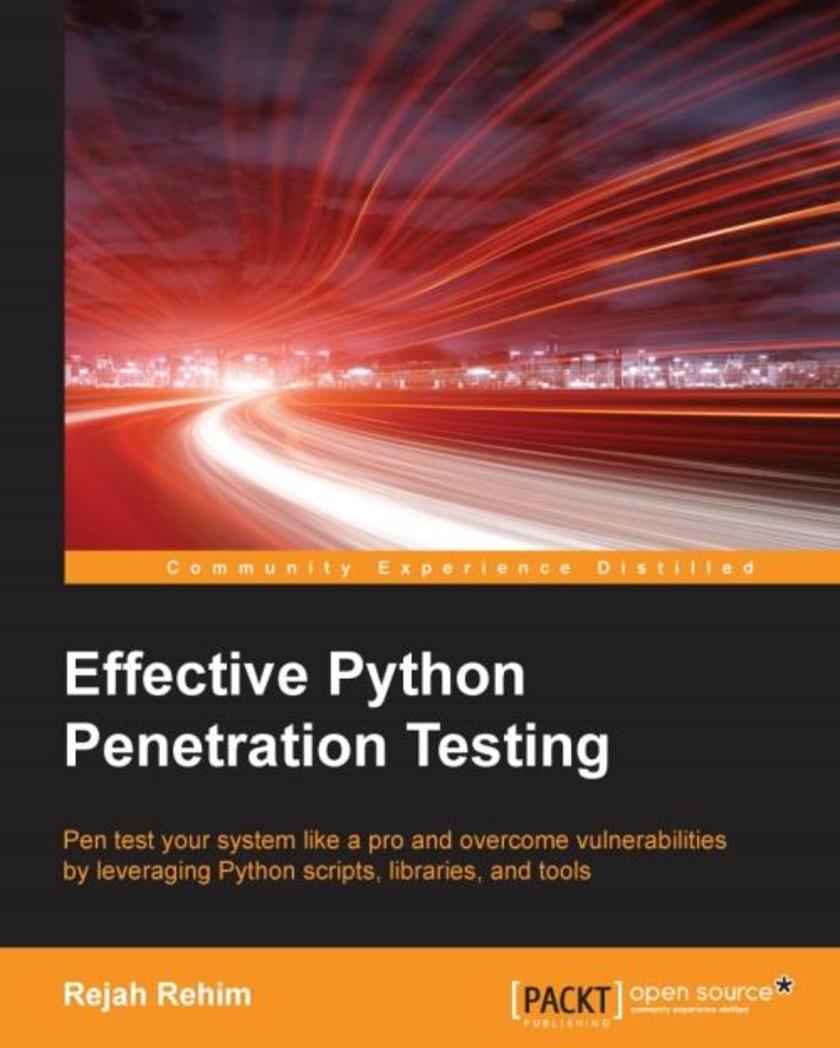
Effective Python Penetration Testing
¥71.93
Pen test your system like a pro and overcome vulnerabilities by leveraging Python *s, libraries, and tools About This Book Learn to utilize your Python *ing skills to pentest a computer system, network, and web-application Get proficient at the art of assessing vulnerabilities by conducting effective penetration testing This is the ultimate guide that teaches you how to use Python to protect your systems against sophisticated cyber attacks Who This Book Is For This book is ideal for those who are comfortable with Python or a similar language and need no help with basic programming concepts, but want to understand the basics of penetration testing and the problems pentesters face. What You Will Learn Write Scapy *s to investigate network traffic Get to know application fingerprinting techniques with Python Understand the attack *ing techniques Write fuzzing tools with pentesting requirements Learn basic attack *ing methods Utilize cryptographic toolkits in Python Automate pentesting with Python tools and libraries In Detail Penetration testing is a practice of testing a computer system, network, or web application to find weaknesses in security that an attacker can exploit. Effective Python Penetration Testing will help you utilize your Python *ing skills to safeguard your networks from cyberattacks. We will begin by providing you with an overview of Python *ing and penetration testing. You will learn to analyze network traffic by writing Scapy *s and will see how to fingerprint web applications with Python libraries such as ProxMon and Spynner. Moving on, you will find out how to write basic attack *s, and will develop debugging and reverse engineering skills with Python libraries. Toward the end of the book, you will discover how to utilize cryptography toolkits in Python and how to automate Python tools and libraries. Style and approach This is an expert’s guide to Python with a practical based approach, where each chapter will help you improve your penetration testing skills using Python to become a master pen tester.
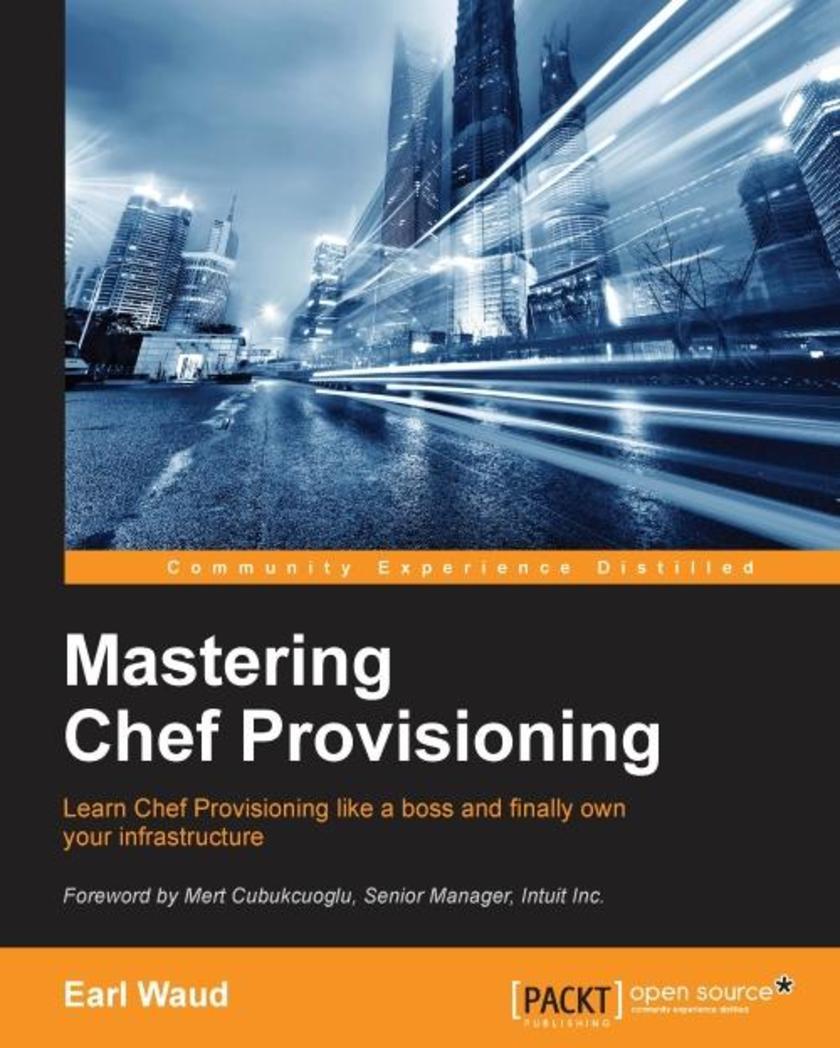
Mastering Chef Provisioning
¥71.93
Learn Chef Provisioning like a boss and finally own your infrastructure About This Book This is the first Chef book focused on provisioning infrastructure as its sole task. The book offers a clear solution to a specific pain point: learn to make your system work faster. Learning better approaches to load balancing and parallelization with this book will save you time By mastering the techniques in this book, you will know how to run an entire fleet of machines without breaking a sweat This book is more helpful than the documentation ( https://docs.chef.io/provisioning.html), with a stronger guiding voice and clearer explanations and use cases Who This Book Is For This book is for Software Engineers, System Administrators, or DevOps Engineers who need to quickly deliver reliably consistent infrastructure at scale. You are expected to have intermediate experience with Chef and Ruby and will be reading this book to advance your knowledge and take your skillset to the next level. What You Will Learn Use best practices to describe your entire infrastructure as code Automate and document every aspect of your network, from the hardware of individual nodes to software, middleware, and all containers and clouds Create a perfect model system Make the best possible use of your resources and avoid redundancy Deliver on the promise of Infrastructure as Code Scale with ease by properly provisioning their infrastructure Use the best Test Driven Development methodologies In Detail This book will show you the best practices to describe your entire infrastructure as code. With the help of this book you can expand your knowledge of Chef because and implement robust and scalable automation solutions. You can automate and document every aspect of your network, from the hardware to software, middleware, and all your containers. You will become familiar with the Chef’s Chef Provisioning tool. You will be able to make a perfect model system where everything is represented as code beneath your fingertips. Make the best possible use of your resources, and deliver infrastructure as code, making it as versionable, testable and repeatable as application software Style and approach By dedicating a whole book solely to the question of provisioning, this book will teach administrators to use Chef as a birds-eye lens for their entire system. It will moves you away from the specifics of each machine and its automations and instead will teach you them how to approach the entire cluster as something different than the sum of its parts. By focusing on infrastructure as code as its own project, the book offers elegant, time-saving solutions for a perfectly described and automated network.
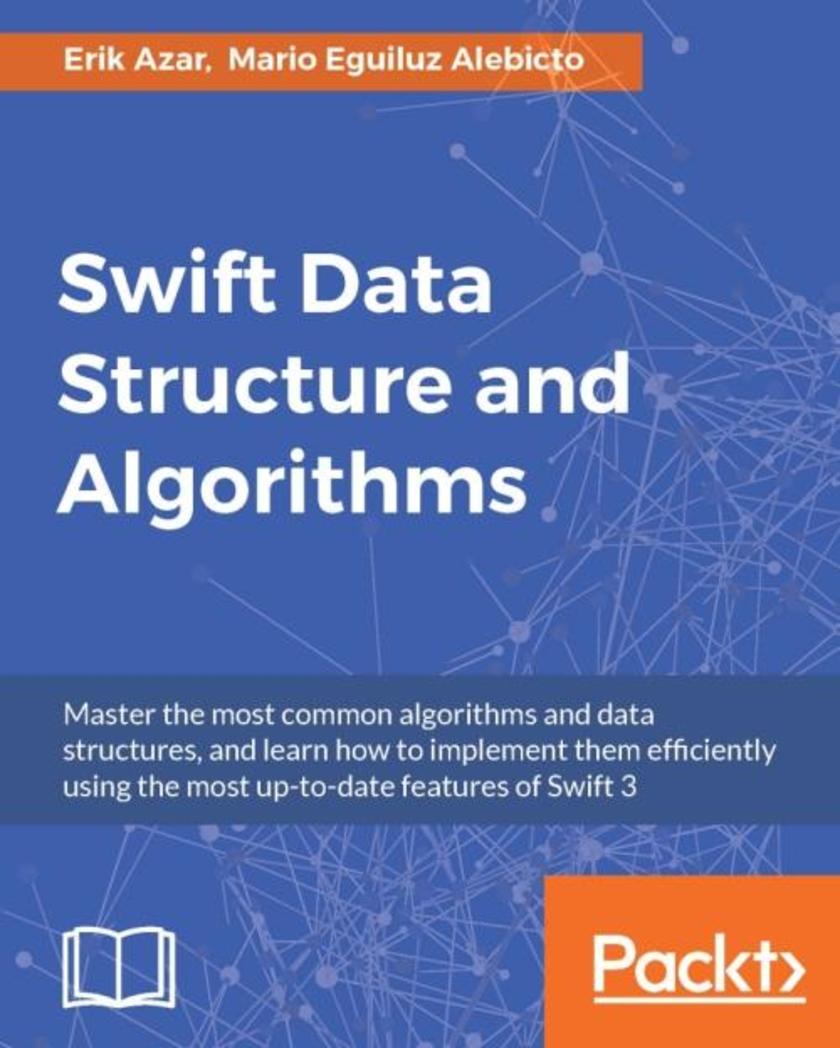
Swift Data Structure and Algorithms
¥71.93
Master the most common algorithms and data structures, and learn how to implement them efficiently using the most up-to-date features of Swift 3 About This Book Develop a deep understanding of the collections in the Swift Standard Library with this step-by-step guide Develop native Swift data structures and algorithms for use in mobile, desktop, and server-based applications Learn about performance efficiency between different data structures and algorithms Who This Book Is For This book is for developers who want to learn how to implement and use common data structures and algorithms natively in Swift. Whether you are a self-taught developer without a formal technical background or you have a degree in Computer Science, this book will provide with the knowledge you need to develop advanced data structures and algorithms in Swift using the latest language features. What You Will Learn Get to know about the basic data structures and how to use the Swift REPL Use the Swift Standard Library collections bridging to Objective-C collections, and find out about protocol-oriented programming Find out about Swift generators and sequences, and see how to use them to implement advanced data structures such as Stack, StackList, Queue, and LinkedList Implement sorting algorithms such as Insertion Sort, Merge Sort, and Quick Sort and understand the performance trade-offs between them See how to implement various binary trees, B-Tree, and Splay Trees Perform advanced searching methods using Red-Black trees, AVL trees, and Trie trees, and take a look at several substring search algorithms Get to know about the data structures used in graphs and how to implement graphs such as depth-first search, breadth-first search, directed graphs, spanning tree, and shortest path Explore algorithm efficiency and see how to measure it In Detail Apple’s Swift language has expressive features that are familiar to those working with modern functional languages, but also provides backward support for Objective-C and Apple’s legacy frameworks. These features are attracting many new developers to start creating applications for OS X and iOS using Swift. Designing an application to scale while processing large amounts of data or provide fast and efficient searching can be complex, especially running on mobile devices with limited memory and bandwidth. Learning about best practices and knowing how to select the best data structure and algorithm in Swift is crucial to the success of your application and will help ensure your application is a success. That’s what this book will teach you. Starting at the beginning, this book will cover the basic data structures and Swift types, and introduce asymptotic analysis. You’ll learn about the standard library collections and bridging between Swift and Objective-C collections. You will see how to implement advanced data structures, sort algorithms, work with trees, advanced searching methods, use graphs, and performance and algorithm efficiency. You’ll also see how to choose the perfect algorithm for your problem. Style and approach This easy-to-follow yet comprehensive guide can either be read from beginning to end, or depending on your current knowledge level, you can jump to the specific chapter that interests you. Each chapter topic starts with an introduction to the topic and algorithm before moving on to the hands-on implementation and analysis.
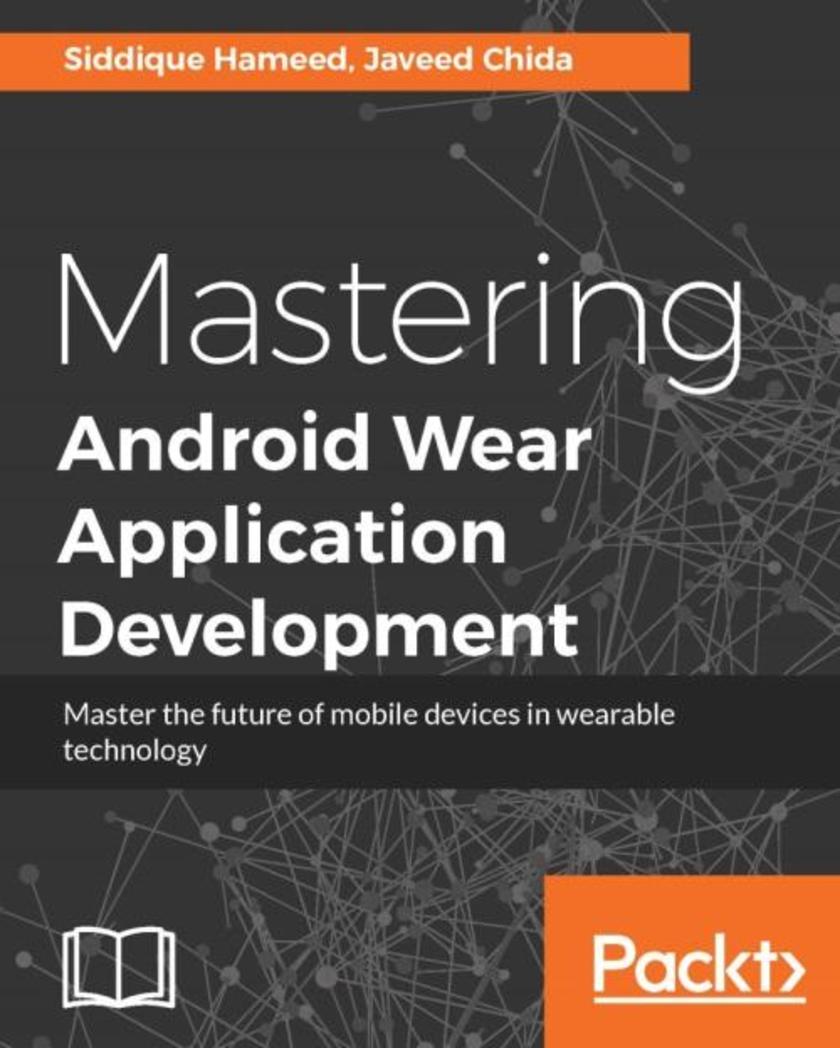
Mastering Android Wear Application Development
¥71.93
Master the future of mobile devices in wearable technology About This Book Mastering Android Wear Development is a complete guide to wearable technology for experienced Android developers Notifications, voice input, coping with round screens – all the key challenges of wearable technology are covered This book describes not just how to write code for wearables, but also how to think about wearable technology and design apps that work well with the physical limitations of wearable devices Who This Book Is For This book is for application developers (the web, mobile, and desktop) who are interested in building new wearable apps, and mobile developers who already have apps on iTunes or Google Play Store and are looking to provide Android Wear support for their existing Android or iOS apps. What You Will Learn Understand the Wearable computing technology Set up a development environment to build Android Wear apps using Android Studio Master the Android Wear SDK and APIs Understand the UI patterns and UX principles to build Android Wear apps Work with the different form factors of wearable devices (round and square) Take advantage of the sensors available on Android Wear devices Develop Android Wear sample apps Communicate between Android mobile and Android Wear apps Get to know the steps involved in publishing Android Wear apps to the Play store In Detail Wearable technology is the future of mobile devices. It looks set to be a breakthrough technology, just like the iPad was before it. With the Apple Watch being widely regarded as a success, all eyes are now on Google to provide a similar device for its users. Keep your skills ahead of the competition and be one of the first to fully understand this powerful new trend. This book will give you a very solid understanding of the philosophy, thought process, development details, and methodologies involved in building well-designed, robust Android Wear applications. We cover the advantages and disadvantages of the wearable computing paradigm and provide a good foundational knowledge for you to build practical, real-world wearable apps. You will learn about the various tools, platforms, libraries, SDKs, and technology needed to build Android Wear apps. By the end of the book, you will be an expert in building Android wearable apps. Style and approach This one-stop professional tutorial will teach you everything you need to know to begin designing and developing applications for this exciting new technology. Every step from development through testing to deployment is explained in depth.
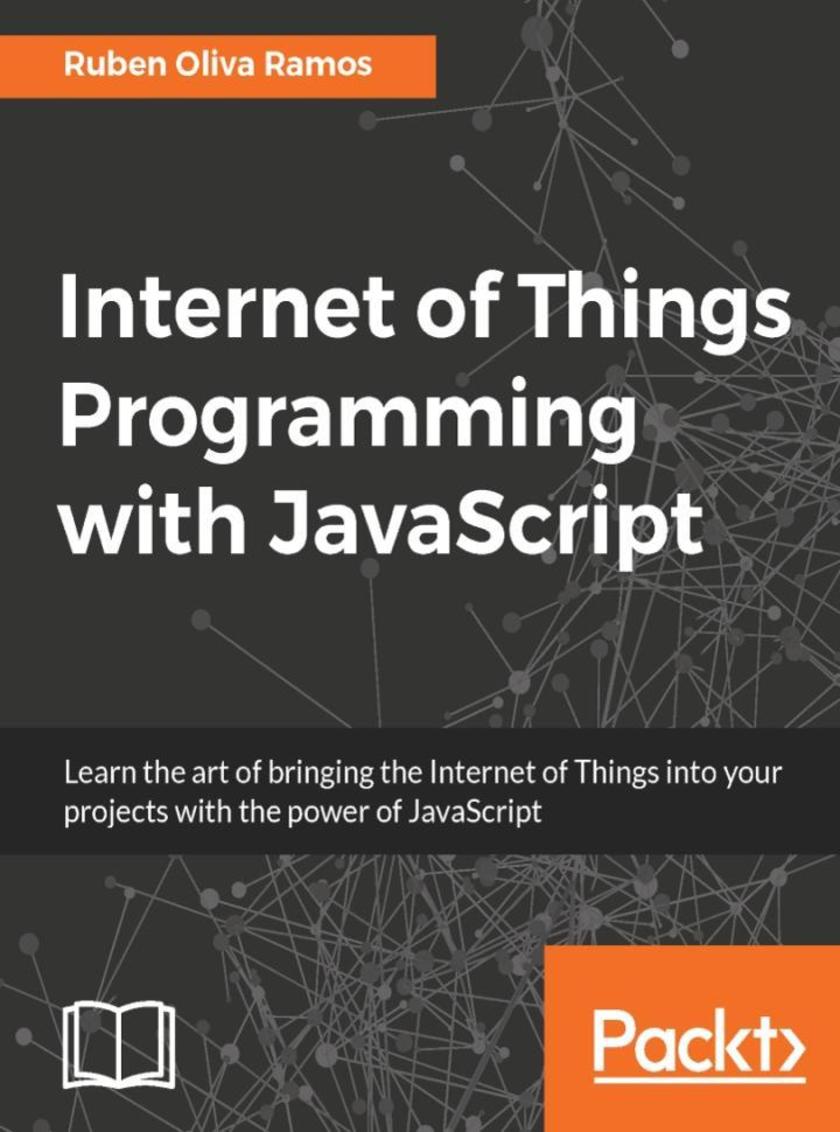
Internet of Things Programming with JavaScript
¥71.93
Learn the art of bringing the Internet of Things into your projects with the power of JavaScript About This Book This is a practical guide to help you configure and build a complete distributed IoT system from scratch using JavaScript Utilize the power of Node and HTML5 to develop web services and a centralized web server, enabling high-level communication between connected devices Control all your connected devices from the browser by setting up a common dashboard Who This Book Is For This book is for developers who are interested in learning how to communicate with connected devices in JavaScript to set up an IoT system. Some basic knowledge of JavaScript is expected. Hobbyists who want to explore the potential of IoT in JavaScript will also find this book useful. What You Will Learn Develop the skills to connected devices prepared the field to interact with the devices in a network system Internet of Things Find out how to connect sensors and actuators to the devices Send data to a web server connected devices Understand Internet of things using web services and database Configure a dashboard using HTML5 and JavaScript Control devices connected from a dashboard Monitor different devices from the dashboard Build an app for a smartphone to control different devices In Detail The Internet of Things (IoT) is an entirely new platform for developers and engineers, but one thing that remains consistent as we move into this new world, are the programming languages. JavaScript is the most widely used language over the Internet, and with IoT gaining momentum, you will learn how to harness the power of JavaScript to interact with connected devices. This book will teach you how to interact with endpoint devices by developing web services in JavaScript and also set up an interface to control all connected devices. This book begins with setting up a centralized web server that serves as a hub for all connected devices. The book then progresses further towards building web services to facilitate high-level communication between connected devices. Using Arduino and Raspberry Pi Zero as endpoint devices, the book will show you how devices can communicate with each other, perform a wide range of tasks, and also be controlled from a centralized location using JavaScript. The book ends with creating a hybrid app to control the devices that can be run from a browser or installed on a smartphone. Style and approach This book offers step-by-step guidance on how to set up a distributed IoT system using JavaScript. It will teach you how to interact with endpoint devices by developing web services in JavaScript and also set up an interface for controlling all connected devices.
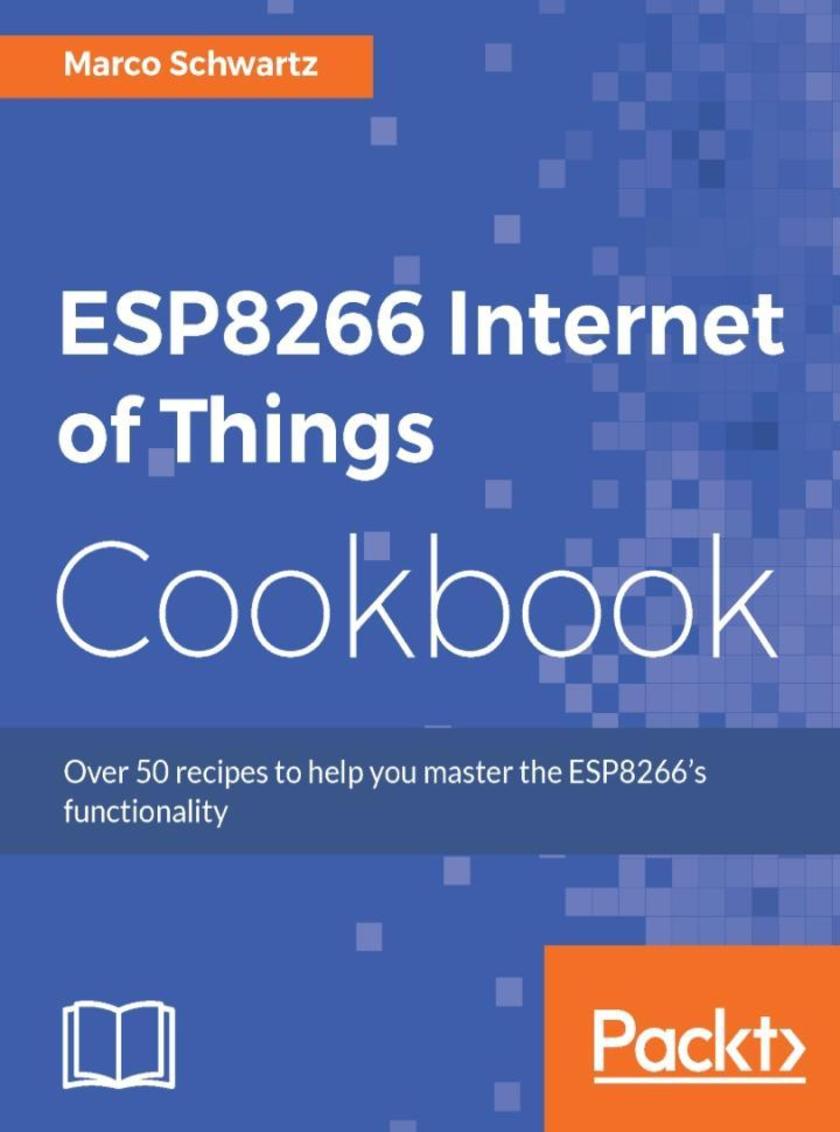
ESP8266 Internet of Things Cookbook
¥71.93
The ESP8266 Wi-Fi Module is a self contained System on Chip (SOC) with an integrated TCP/IP protocol stack and can give any microcontroller access to your Wi-fi network. It is capable of either hosting an application or offloading all Wi-fi networking functions from another application processor. This book contains practical recipes that will help you master all ESP8266 functionalities. You will start by configuring and customizing the chip in line with your requirements. Then you will focus on core topics such as on-board processing, sensors, GPIOs, programming, networking, integration with external components, and so on. We will also teach you how to leverage Arduino using the ESP8266 and you'll learn about its libraries, file system, OTA updates, and so on. The book also provide recipes on web servers, testing, connecting with the cloud, and troubleshooting techniques. Programming aspects include MicroPython and how to leverage it to get started with the ESP8266. Towards the end, we will use these concepts and create an interesting project (IOT). By the end of the book, readers will be proficient enough to use the ESP8266 board efficiently.
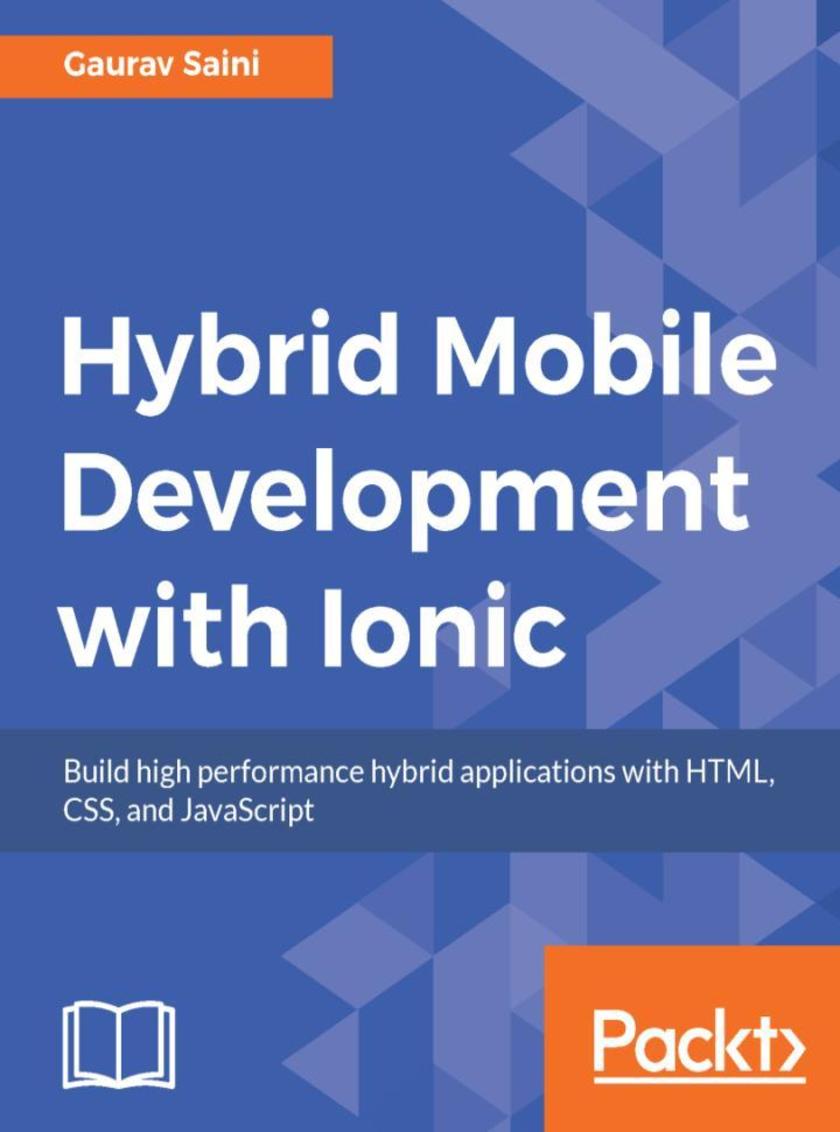
Hybrid Mobile Development with Ionic
¥71.93
Key Features ?Develop high-grade and performance-optimized hybrid applications using Ionic ?Discover all the latest and upcoming features of Ionic 2 ?A practical guide that will help you fully utilize all the features and components of Ionic 2 efficiently Book De*ion Ionic is an open source, front-end framework that allows you to develop hybrid mobile apps without any native-language hassle for each platform. It offers a library of mobile-optimized HTML, CSS, and JS components for building highly interactive mobile apps. This book will help readers develop a complete, professional-quality mobile application with Ionic Framework. You will start the journey by learning to configure and customize Ionic Framework. Then, you will move on to Ionic 2 components and see how you can customize them according to your applications. Also, you will implement various native plugins and integrate them with Ionic 2 along with Ionic Platform services to use them optimally in your application. You will also master authorization, authentication, and security techniques to ensure that your application and data are secure. Further, you will integrate backend services such as Firebase and the Cordova iBeacon plugin in your application. Lastly, you will test and troubleshoot your application. By the end of the book, you will not only have built a professional, hybrid mobile application but will also have ensured that your app is secure and performance-driven. What you will learn ?Use every Ionic component and customize it according to the application. ?Implement offline functionality in your application with various storage options such as localstorage and SQLite. ?Integrate the various Ionic backend services and features such as Ionic push and Ionic playground to send push notification and track events in your application. ?Explore white-listing, CORS, and various other platform security aspects to secure your application. ?Sync your data to the cloud server and fetch it in real time. ?Integrate the Cordova iBeacon plugin and fetch contextual data on the basis of location and iBeacon's UUID
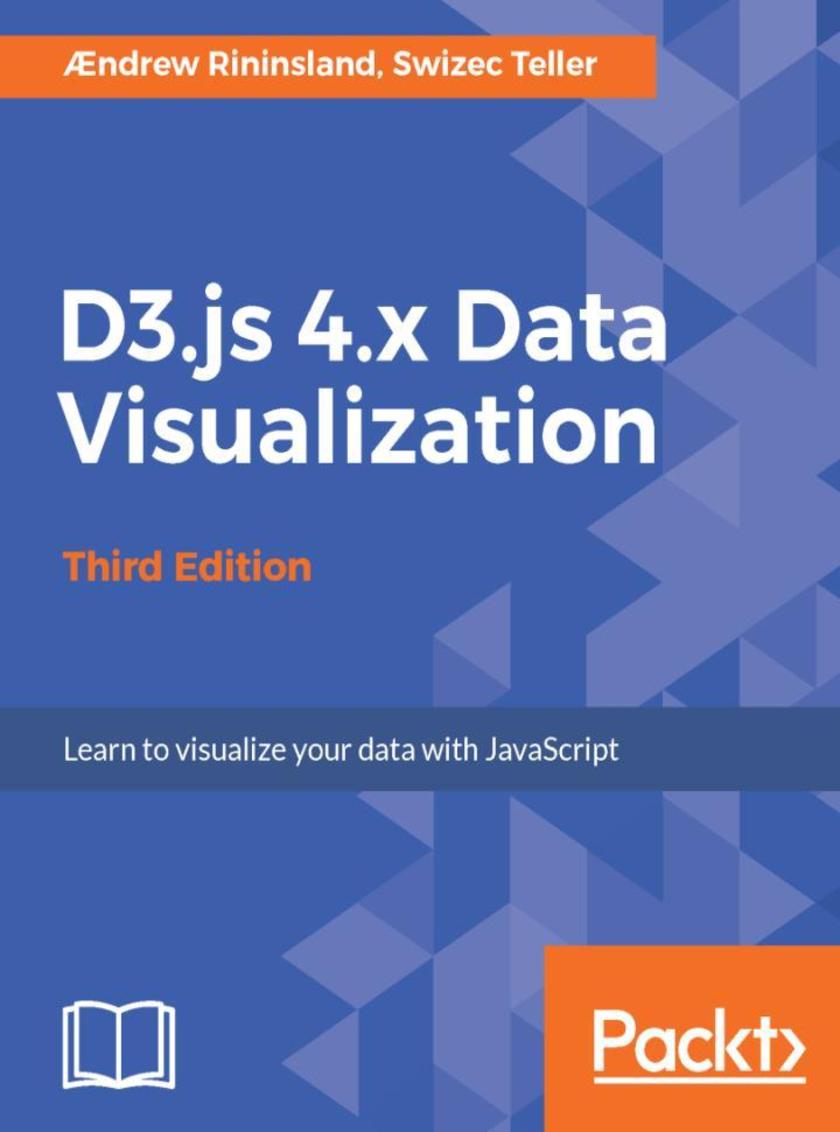
D3.js 4.x Data Visualization - Third Edition
¥71.93
Create and publish your own interactive and compelling data visualizations with D3.js 4.x About This Book ?Build interactive and rich graphics and visualization using JavaScript`s powerful library D3.js ?Learn D3 from the ground up, using the all-new version 4 of the library ?Gain insight into producing high-quality, extensible charts and visualizations using best practices such as writing testable, extensible code and strong typing Who This Book Is For This book is for web developers, interactive news developers, data scientists, and anyone interested in representing data through interactive visualizations on the Web with D3. Some basic knowledge of JavaScript is expected, but no prior experience with data visualization or D3 is required to follow this book. What You Will Learn ?Map data to visual elements using D3's scales ?Draw SVG elements using D3's shape generators ?Transform data using D3's collection methods ?Use D3's various layout patterns to quickly generate various common types of chart ?Write modern JavaScript using ES2017 and Babel ?Explore the basics of unit testing D3 visualizations using Mocha and Chai ?Write and deploy a simple Node.js web service to render charts via HTML Canvas ?Understand what makes a good data visualization and how to use the tools at your disposal to create accurate charts In Detail Want to get started with impressive interactive visualizations and implement them in your daily tasks? This book offers the perfect solution-D3.js. It has emerged as the most popular tool for data visualization.
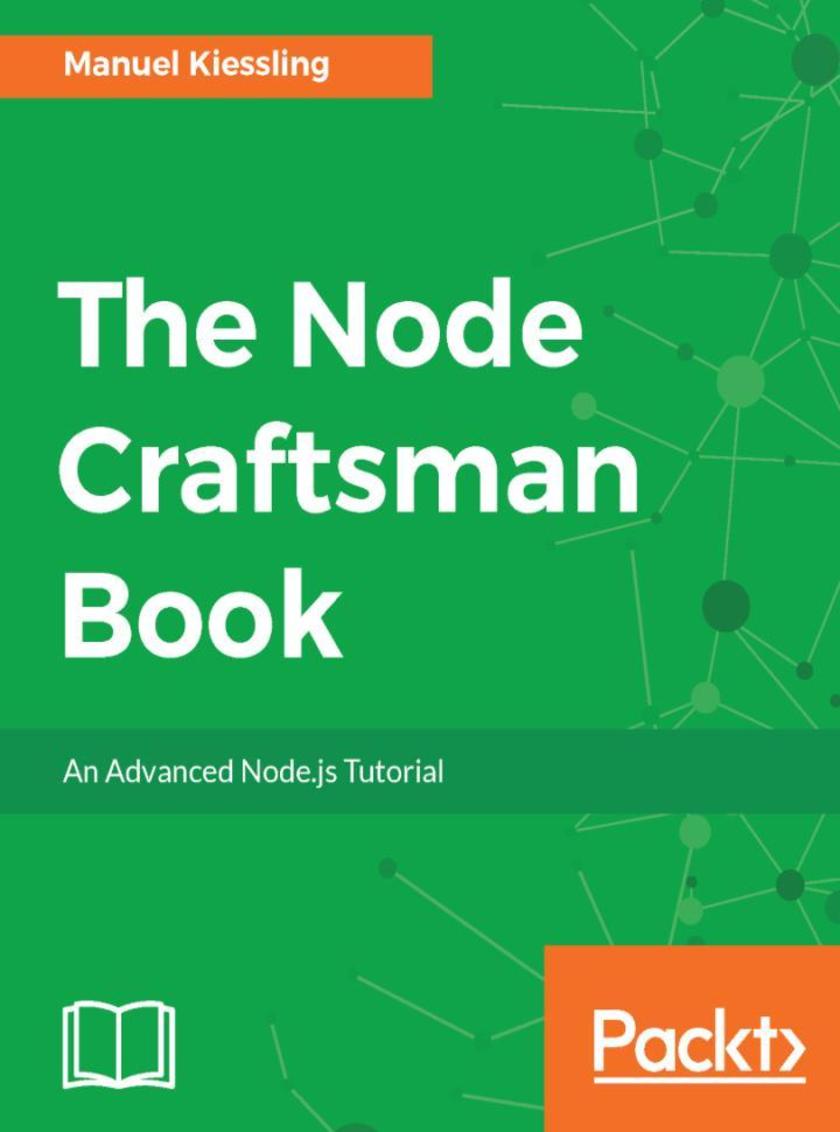
The Node Craftsman Book
¥71.93
The Node Craftsman Book helps JavaScript programmers with basic Node.js knowledge to now thoroughly master Node.js and JavaScript. This book dives you deeper into the craft of software development with Node.js and JavaScript, incuding object-orientation, test-driven development, database handling, web frameworks, and much more. The Node Craftsman Book shows you how to work with Node.js and how to think deeply about how you build your Node projects. You'll master how to build a complete Node.js application across six crafting milestones, and you'll learn many specific skills to achieve that mastery. These skills include how to work with the Node Package Manager in depth, how to connect your Node applications to databases, and how to write unit tests and end-to-end tests for your code. You'll experience the full Node.js development picture, and learn how to craft and control your Node.js applications - right through to fully-fledged web applications using REST, and integration with Angular applications. What you will learn ?How to connect to databases like MongoDB and MySQL from your Node.js application ?How to unit tests and end-to-end tests for your code ?When and how to leverage migrations for setting up a continuous deployment workflow ?Detailed insight into how the Node Package Manager, NPM works ?How object-orientation actually works
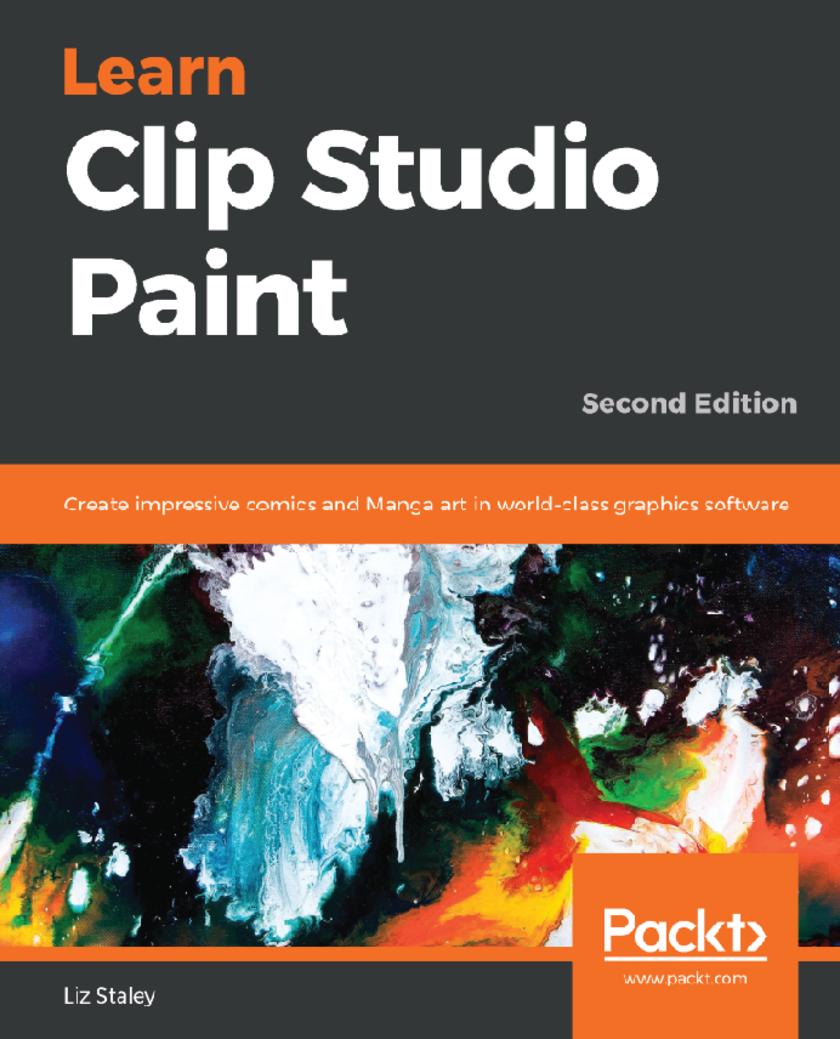
Learn Clip Studio Paint
¥71.93
Take your comics and illustrations to the next level with the powerful art tools in Clip Studio Paint 1.8 Key Features *Overcome “interface overwhelm” with a practical breakdown of the Clip Studio interface *Comprehensive guide on the Clip Studio Paint with detailed coverage of all the tools and concepts of designing comics *Streamline your workflow to create faster and easier using Clip Studio’s features Book Description Clip Studio Paint, the successor to Manga Studio, is used by over four million illustrators and comic creators around the world. This book will guide you through every step of learning this software, from system requirements and installation, all the way through to exporting your work for print or the web. Learn how to create new documents, customize tools to fit your working style, use ruler tools to create anything from straight lines to intricate backgrounds, add 3D elements, create comic panels using the specialized panel tools, utilize screentones and materials, add text and word balloons to your comics, create sound effects, easily flat and color your comics using reference layers, and bring your drawings to life using the animation features. By the end of this book, you will be able to navigate the Clip Studio Interface and program preferences, customize the various tools, and be able to create your own black-and-white and color illustrations and comics from start to finish. What you will learn *Understand the differences between Clip Studio Paint Pro and EX *Discover how to navigate and customize the user interface *Creating custom tools that fit your unique style of illustration *Using the ruler tools to create intricate perspective shots and complex symmetry *Discover how to use 3D elements in your work *Learn how to create lettering and word balloons to bring your comic stories to life *Understand the process of digital art creation from pencils to inks to color *Understand how to use the animation tools available in Clip Studio Paint Who this book is for If you are a beginning digital artist or are switching to Clip Studio from another graphics software, this book is for you. This book is excellent for those with no knowledge of digital art up to intermediate users looking to explore the unique features of Clip Studio Paint.
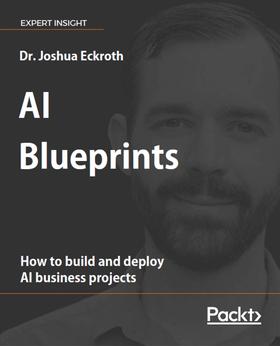
AI Blueprints
¥71.93
The essential blueprints and workflow you need to build successful AI business applications Key Features *Learn and master the essential blueprints to program AI for real-world business applications *Gain insights into how modern AI and machine learning solve core business challenges *Acquire practical techniques and a workflow that can build AI applications using state-of-the-art software libraries *Work with a practical, code-based strategy for creating successful AI solutions in your business Book Description AI Blueprints gives you a working framework and the techniques to build your own successful AI business applications. You’ll learn across six business scenarios how AI can solve critical challenges with state-of-the-art AI software libraries and a well thought out workflow. Along the way you’ll discover the practical techniques to build AI business applications from first design to full coding and deployment. The AI blueprints in this book solve key business scenarios. The first blueprint uses AI to find solutions for building plans for cloud computing that are on-time and under budget. The second blueprint involves an AI system that continuously monitors social media to gauge public feeling about a topic of interest - such as self-driving cars. You’ll learn how to approach AI business problems and apply blueprints that can ensure success. The next AI scenario shows you how to approach the problem of creating a recommendation engine and monitoring how those recommendations perform. The fourth blueprint shows you how to use deep learning to find your business logo in social media photos and assess how people interact with your products. Learn the practical techniques involved and how to apply these blueprints intelligently. The fifth blueprint is about how to best design a ‘trending now’ section on your website, much like the one we know from Twitter. The sixth blueprint shows how to create helpful chatbots so that an AI system can understand customers’ questions and answer them with relevant responses. This book continuously demonstrates a working framework and strategy for building AI business applications. Along the way, you’ll also learn how to prepare for future advances in AI. You’ll gain a workflow and a toolbox of patterns and techniques so that you can create your own smart code. What you will learn *An essential toolbox of blueprints and advanced techniques for building AI business applications *How to design and deploy AI applications that meet today’s business needs *A workflow from first design stages to practical code solutions in your next AI projects *Solutions for AI projects that involve social media analytics and recommendation engines *Practical projects and techniques for sentiment analysis and helpful chatbots *A blueprint for AI projects that recommend products based on customer purchasing habits *How to prepare yourself for the next decade of AI and machine learning advancements Who this book is for Programming AI Business Applications provides an introduction to AI with real-world examples. This book can be read and understood by programmers and students without requiring previous AI experience. The projects in this book make use of Java and Python and several popular and state-of-the-art opensource AI libraries.
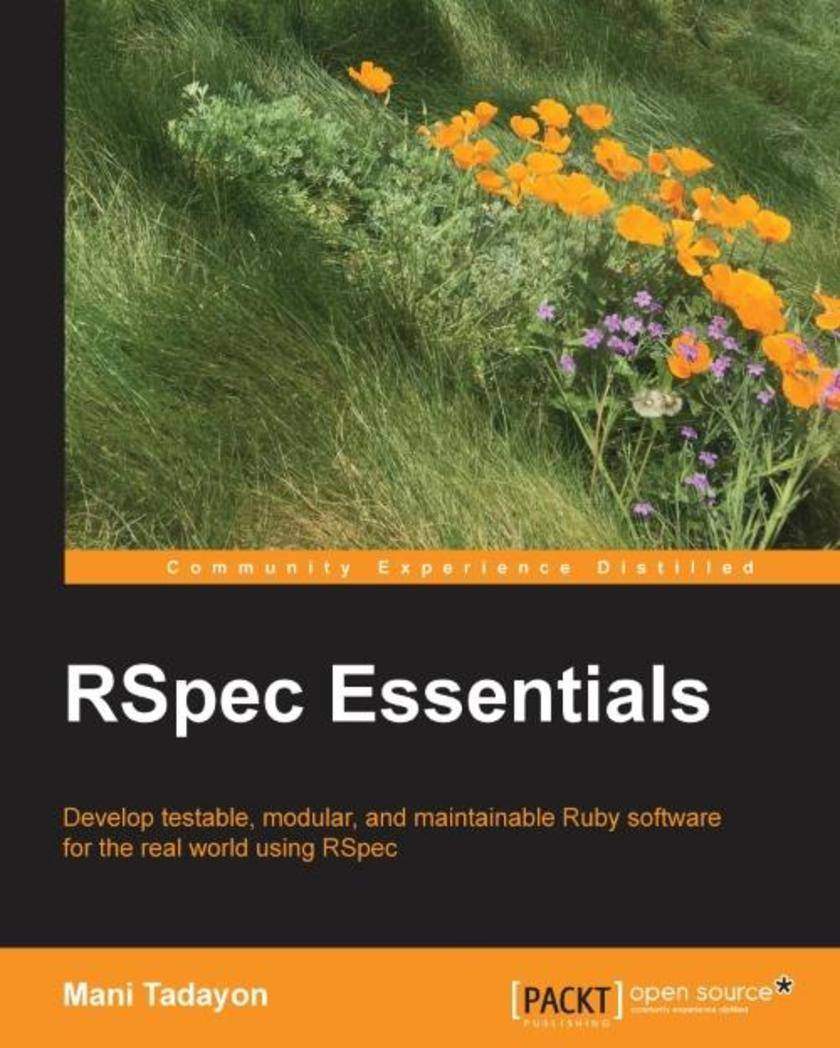
RSpec Essentials
¥71.93
Develop testable, modular, and maintainable Ruby software for the real world using RSpec About This Book Explore the concept of testability and how to implement tests that deliver the most value Maximize the quality of your Ruby code through a wide variety of tests Master the real-world tradeoffs of testing through detailed examples supported by in-depth discussion Who This Book Is For This book is aimed at the software engineer who wants to make their code more reliable and their development process easier. It is also aimed at test engineers who need to automate the testing of complex systems. Knowledge of Ruby is helpful, but even someone new to the language should find it easy to follow the code and tests. What You Will Learn Identify a unit of software for the purposes of testing Manage test states with hooks, fixtures, and mocks Handle external web services in tests using various techniques Configure RSpec flexibly and cleanly using support code and environment variables Interact with rich web apps in tests using Capybara Build the right feature with behavior-driven development Customize matchers and failure messages Verify correct development and production environments In Detail This book will teach you how to use RSpec to write high-value tests for real-world code. We start with the key concepts of the unit and testability, followed by hands-on exploration of key features. From the beginning, we learn how to integrate tests into the overall development process to help create high-quality code, avoiding the dangers of testing for its own sake. We build up sample applications and their corresponding tests step by step, from simple beginnings to more sophisticated versions that include databases and external web services. We devote three chapters to web applications with rich JavaScript user interfaces, building one from the ground up using behavior-driven development (BDD) and test-driven development (TDD). The code examples are detailed enough to be realistic while simple enough to be easily understood. Testing concepts, development methodologies, and engineering tradeoffs are discussed in detail as they arise. This approach is designed to foster the reader’s ability to make well-informed decisions on their own. Style and approach This comprehensive tutorial is packed with real-world examples of testing with RSpec. The most important features of RSpec are introduced in the early chapters and are used in examples of growing complexity in the following chapters. Concepts and methodologies are discussed in detail.
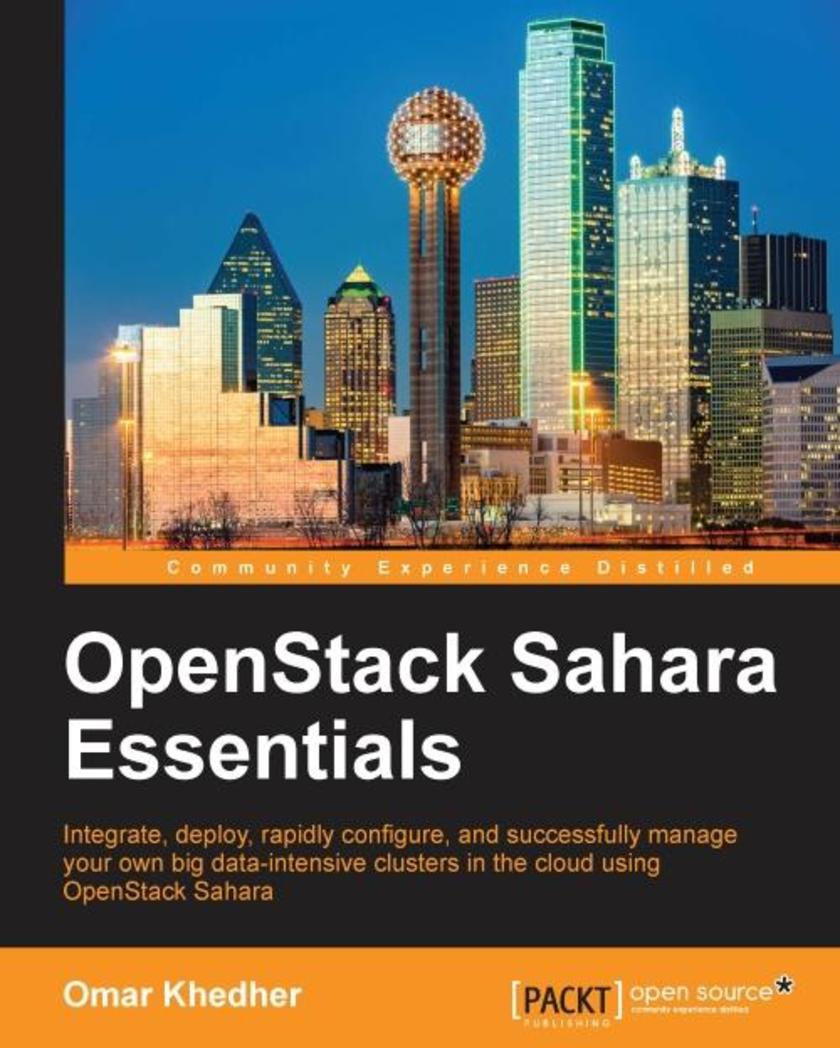
OpenStack Sahara Essentials
¥71.93
Integrate, deploy, rapidly configure, and successfully manage your own big data-intensive clusters in the cloud using OpenStack Sahara About This Book A fast paced guide to help you utilize the benefits of Sahara in OpenStack to meet the Big Data world of Hadoop. A step by step approach to simplify the complexity of Hadoop configuration, deployment and maintenance. Who This Book Is For This book targets data scientists, cloud developers and Devops Engineers who would like to become proficient with OpenStack Sahara. Ideally, this book is well suitable for readers who are familiars with databases, Hadoop and Spark solutions. Additionally, a basic prior knowledge of OpenStack is expected. The readers should also be familiar with different Linux boxes, distributions and virtualization technology. What You Will Learn Integrate and Install Sahara with OpenStack environment Learn Sahara architecture under the hood Rapidly configure and scale Hadoop clusters on top of OpenStack Explore the Sahara REST API to create, deploy and manage a Hadoop cluster Learn the Elastic Processing Data (EDP) facility to execute jobs in clusters from Sahara Cover other Hadoop stable plugins existing supported by Sahara Discover different features provided by Sahara for Hadoop provisioning and deployment Learn how to troubleshoot OpenStack Sahara issues In Detail The Sahara project is a module that aims to simplify the building of data processing capabilities on OpenStack. The goal of this book is to provide a focused, fast paced guide to installing, configuring, and getting started with integrating Hadoop with OpenStack, using Sahara. The book should explain to users how to deploy their data-intensive Hadoop and Spark clusters on top of OpenStack. It will also cover how to use the Sahara REST API, how to develop applications for Elastic Data Processing on Openstack, and setting up hadoop or spark clusters on Openstack. Style and approach This book takes a step by step approach teaching how to integrate, deploy and manage data using OpenStack Sahara. It will teach how the OpenStack Sahara is beneficial by simplifying the complexity of Hadoop configuration, deployment and maintenance.
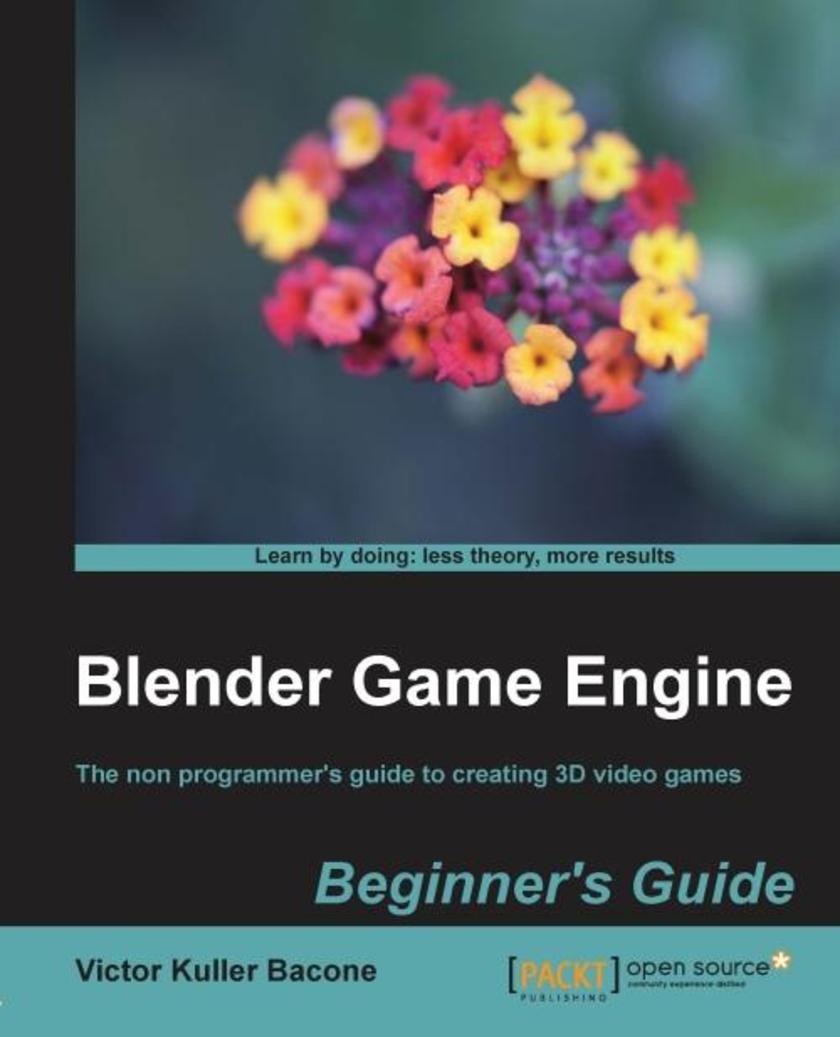
Blender Game Engine: Beginner’s Guide
¥71.93
Create a complete game step by step with no previous experience necessary. Practical tutorials take you through the entire process from beginning to end. If you have used Blender before but never got to grips with the Blender Game Engine (BGE), this book is for you. If you have tried and failed with other game development environments, or if *ing is not your strong point, this is where you should start.
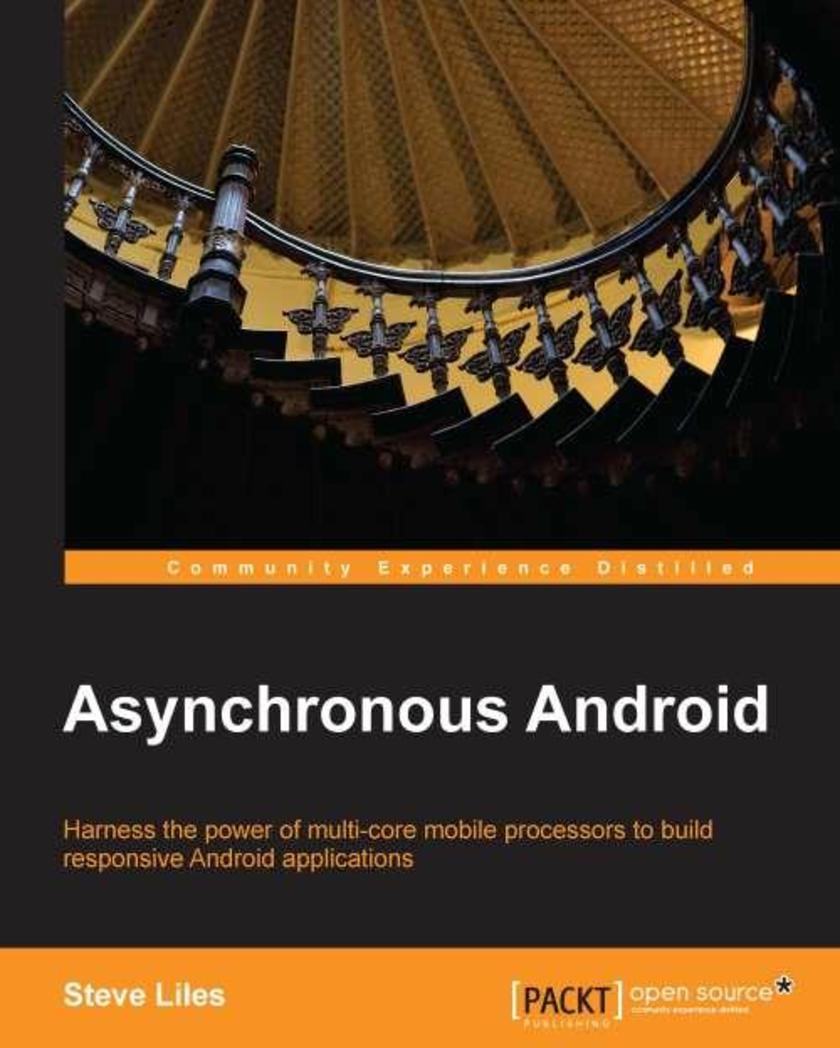
Asynchronous Android
¥71.93
Concurrent Programming on Android is a step-by-step guide that builds a complete picture of the concurrency constructs available on the Android platform.This book is for Android developers who want to learn about the advanced concepts of Android programming. No prior knowledge of concurrency and asynchronous programming is required. This book is also targeted towards Java experts who are new to Android.
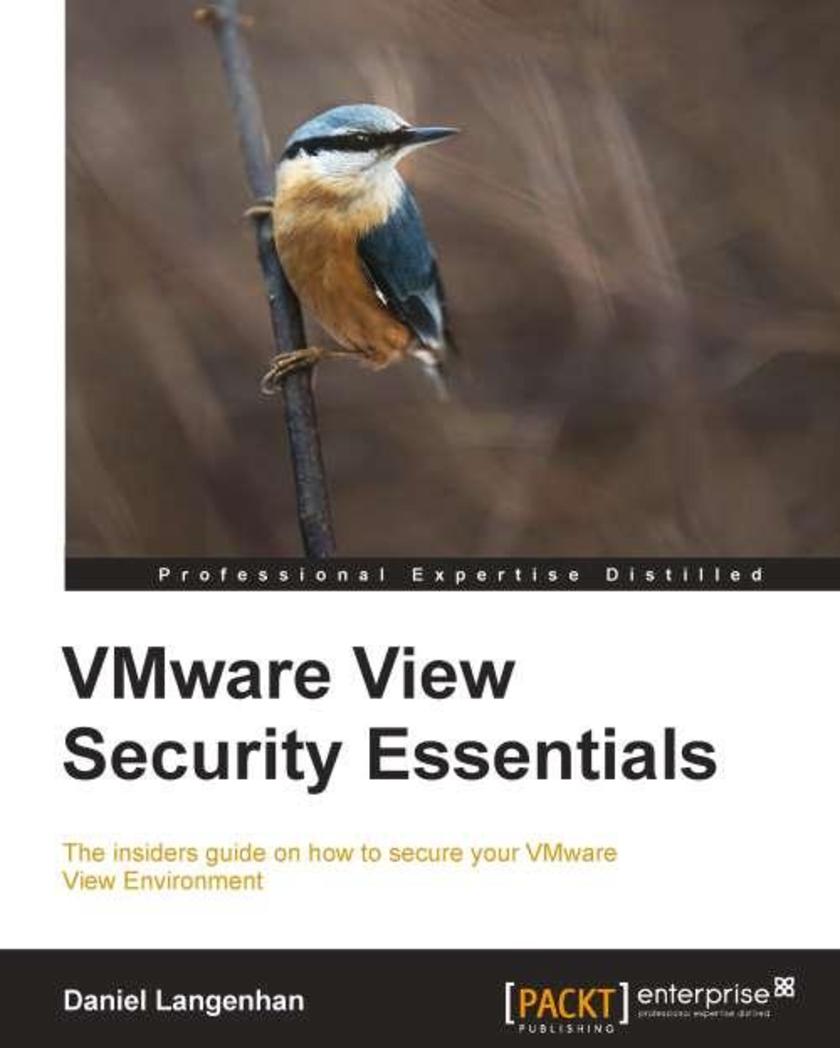
VMware View Security Essentials
¥71.93
A practical and fast-paced guide that gives you all the information you need to secure your virtual environment.This book is a “how-to” for the novice, a “reference guide” for the advanced user, and a “go to" for the experienced user in all the aspects of VMware View desktop virtualization security.
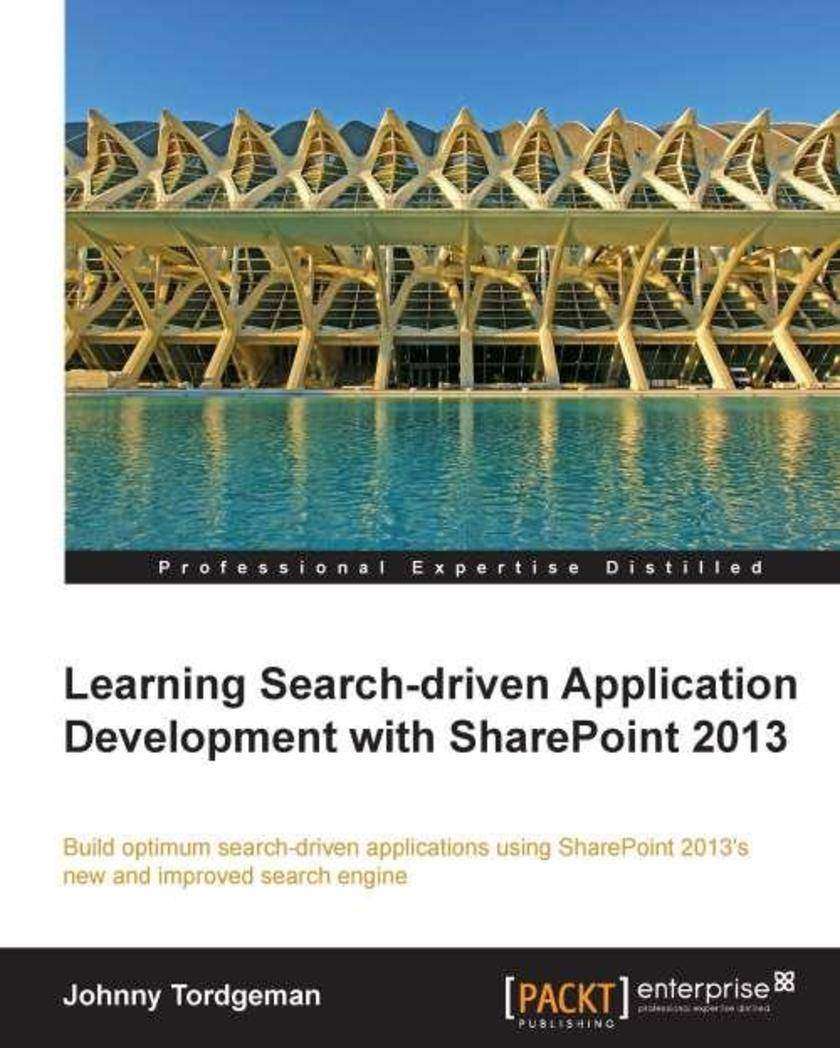
Learning Search-driven Application Development with SharePoint 2013
¥71.93
A fast paced, practical guide, filled with code examples and demonstrations of enterprise search using SharePoint 2013.This book is written for SharePoint and JavaScript developers who want to get started with SharePoint search and create search-driven applications. The book assumes working knowledge with previous versions of SharePoint and some experience with JavaScript and client side development




 购物车
购物车 个人中心
个人中心



